Satellite Imagery shows whales held captive in Russia
- European Space Imaging
- 5 April, 2019
Satellite images show whales being held captive in Russia’s Srednyaya Bay amongst international outcries for the animals’ release.
Reports say that up to 100 whales are being illegally held in small pens near Nakhodka, Russia. The collection of both orcas (killer whales) and belugas are likely destined for marine parks in China, according to Greenpeace.
French marine scientist, Jean-Michel Cousteau plans to meet with Moscow officials to visit the site on Saturday.
A criminal investigation has been launched as four Russian companies are being accused of animal cruelty and violating fishing regulations.
Some animal experts are concerned that the whales may be showing signs of hypothermia as ice collects around and even inside the small pens. This can be clearly seen in the satellite images.
Very High Resolution imagery is being utilized internationally by both maritime surveillance agencies and animal rights groups to shed light on illicit fishing operations and aid in legal proceedings
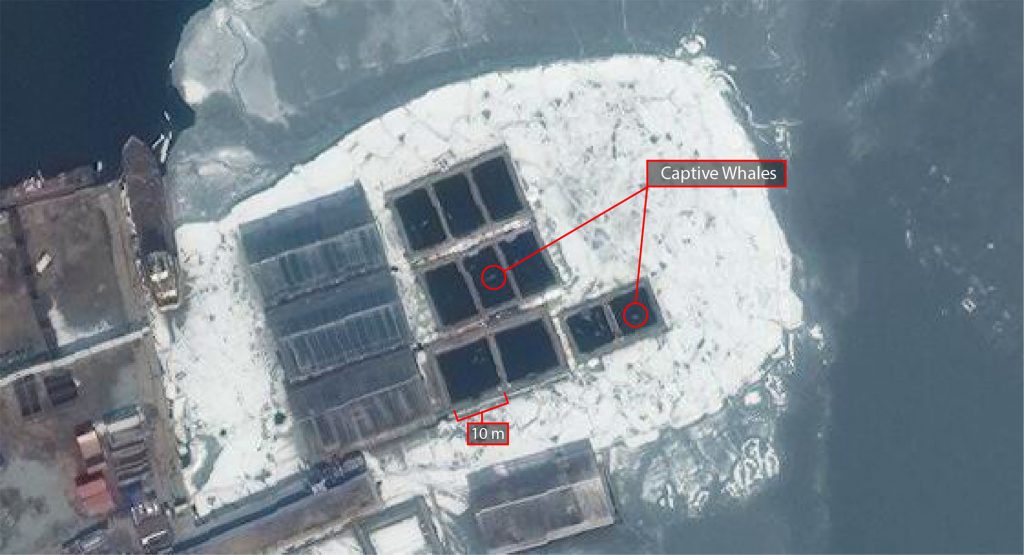
Close up view of whale pens with several visible animals. Satellite Imagery © 2019 DigitalGlobe, A Maxar Company – provided by European Space Imaging
He went on to say, “In these images captured by WorldView-3 in late February, a number of whales can be seen inside the pins, which may provide crucial evidence as international criminal investigations move forward.”
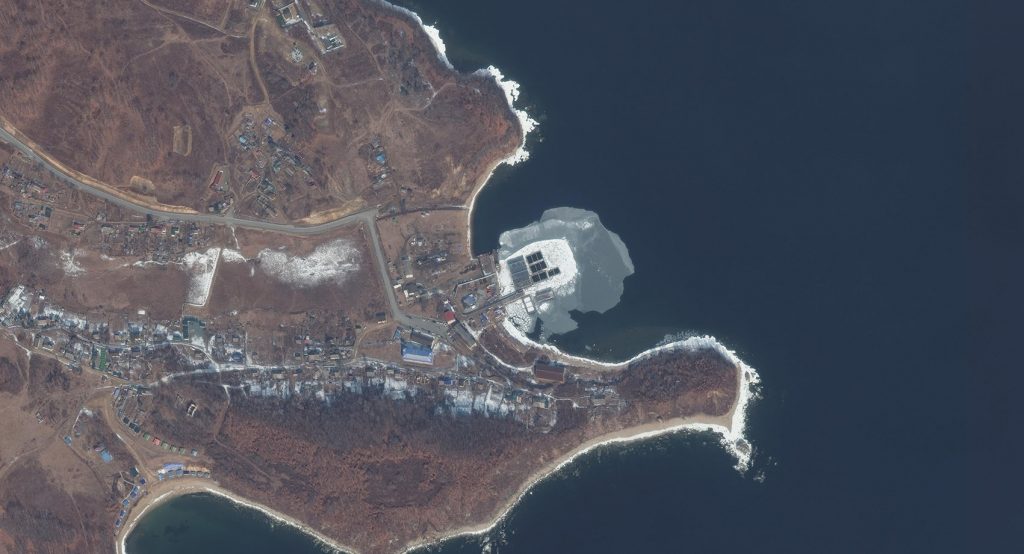
Satellite image captured on 22 Feb. 2019 at 30 cm resolution showing at least ten whale pens in Srednyaya Bay Satellite Imagery © 2019 DigitalGlobe, A Maxar Company – provided by European Space Imaging
For more information on how satellite imagery aids in maritime surveillance activities, please visit our Maritime page.
Related Stories
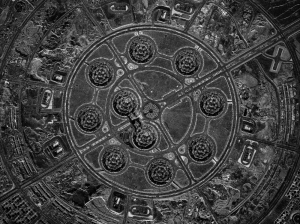
What is SAR Imagery? Introduction to Synthetic Aperture Radar
SAR imagery enables all-weather monitoring, penetrates dry soil, and offers resolution as high as 25 cm. Thanks to that, it’s invaluable for applications like emergency response, defence and intelligence, or agriculture. How does SAR work? What are its advantages and limitations? And what other data sources can you integrate it with? Read the article to learn more.
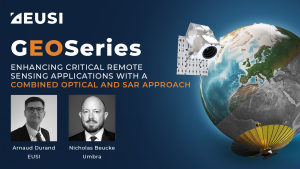
Enhancing Critical Applications With A Combined Optical and SAR Approach
For the first time in history, users can schedule synchronised collections of 25 cm SAR and 30 cm Near Real-Time optical imagery to mitigate weather and gain deeper insights of events unfolding on the ground. This is especially valuable for Emergency Response, GEOINT and other applications.
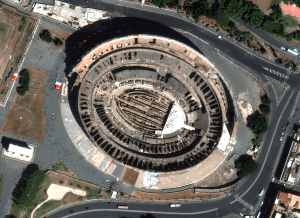
18 European Landmarks in Satellite Images
Satellite sensors captured unique architecture, breathtaking nature and centuries of history. Explore the Colloseum, La Sagrada Familia, the Leaning Tower of Pisa, and other landmarks.
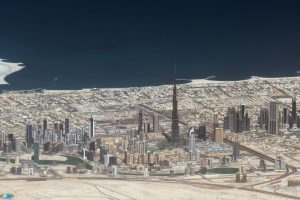
Understanding ONA in Satellite Imagery: What is Off Nadir Angle and What Is It Used For?
Off Nadir Angle (ONA) plays a crucial role in the quality of optical satellite imagery. It influences its resolution and clarity, decides the visibility of features, and makes it easier or harder to identify objects. Moreover, ONA is used to create stereo imagery and 3D models of the Earth’s surface. Read on to learn more.





